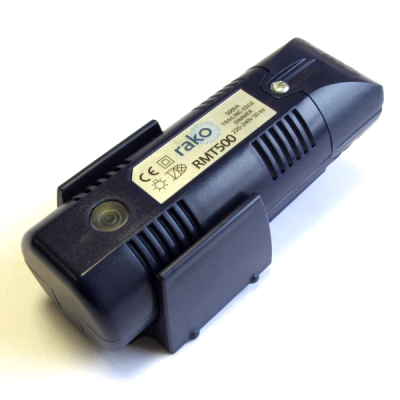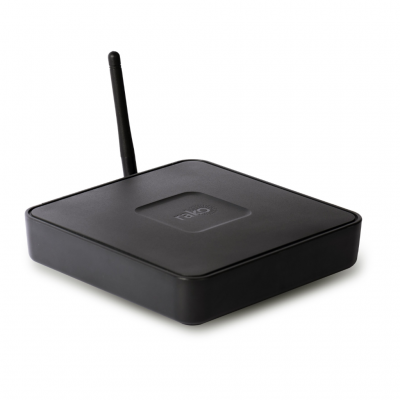In the world of residential design, lighting plays a crucial role in setting the tone and atmosphere of a space. Cost-efficient residential lighting design combines both aesthetics and functionality to create a comfortable living environment while keeping energy consumption low. It’s essential for homeowners in the UK to understand the importance of this balance and implement cost-efficient lighting solutions in their homes. This article will delve into the basics of lighting design, explore the UK context of residential lighting, discuss principles of cost-efficient lighting design, and provide practical tips for achieving this ideal balance.
Understanding the Basics of Lighting Design
Lighting can be broken down into three primary categories: ambient, task, and accent. Each type serves a distinct purpose in the home.
- Ambient lighting, also known as general lighting, provides uniform illumination throughout a space. Examples include ceiling lights and wall-mounted fixtures.
- Task lighting serves a specific function, focusing on areas where specific tasks are performed such as reading or cooking. Desk lamps, under-cabinet lighting and pendant lights above a kitchen island are examples of task lighting.
- Accent lighting adds drama and visual interest, emphasising particular architectural features or artwork. Examples include recessed spotlights, picture lights, and track lighting.
Understanding these categories is fundamental when creating a cost-efficient lighting design, as using the right type of light in the appropriate spaces helps conserve energy.
Natural light plays a crucial role in both the energy efficiency and aesthetic appeal of a home. Harnessing natural daylight not only reduces reliance on artificial lighting but also creates a healthier living environment due to its links with improved productivity and mental health. By incorporating large windows, skylights, and light wells, homeowners can maximise the use of natural light and reduce their energy bills.
The choice of light fixtures has a significant impact on the energy efficiency of a lighting design. In addition to the bulbs themselves, the design and placement of fixtures determine how well a space is lit. Selecting well-designed, energy-efficient fixtures is key to creating a cost-efficient lighting solution.
The UK Context for Residential Lighting Design
The transformation of lighting design in the UK has been shaped by factors such as technological advancements, shifts in consumer preferences, and energy policies. From the early days of gas lamps and incandescent bulbs to the current developments in LED lighting and smart home technology, the UK’s residential lighting landscape continues to evolve and adapt.
Today, UK homeowners seek out energy-efficient, stylish, and versatile lighting solutions. Some key current trends include:
- The widespread adoption of LED bulbs owing to their energy-saving and long-lasting nature
- Increasing popularity of smart home technology, enabling homeowners to control their lighting systems remotely and tailor illumination to their needs
- Greater focus on the use of natural light, with architectural trends emphasising open-plan designs and large windows
The UK’s temperate climate, characterised by long, dark winters and shorter daylight hours, makes the need for efficient residential lighting design more pronounced. By capitalising on available daylight and implementing energy-saving technologies, homeowners can offset the higher demand for artificial lighting during these periods.
Principles of Cost-Efficient Lighting Design
Energy Saving Light Bulbs
One of the most integral aspects of cost-efficient lighting design is the use of energy-saving bulbs, such as LEDs and compact fluorescents (CFLs). These bulbs consume significantly less energy than traditional incandescent bulbs and have a longer lifespan, reducing overall energy costs.
Efficient Use of Natural Light
Maximising natural light is another essential principle in cost-efficient lighting design. By capturing daylight through strategic window placement, skylights, and reflective surfaces, homeowners can reduce their reliance on artificial lighting, ultimately conserving energy and lowering expenses.
Quality of Light Fixtures
Investing in high-quality light fixtures is essential for both the aesthetic appeal and longevity of a lighting design. Durable, well-made fixtures are more likely to withstand regular use without the need for frequent repairs or replacements, saving homeowners money in the long run.
Maintenance and Replacement Costs
Long-lasting light bulbs and fixtures also translate to lower maintenance and replacement costs. LED bulbs, for example, have an extended lifetime and require less frequent changing than traditional bulbs, reducing the expense and inconvenience associated with replacing them.
Multi-Purpose Lighting Solutions
Cost-efficient lighting design should offer versatility to accommodate diverse household tasks and personal preferences. Multi-purpose lighting solutions, such as adjustable fixtures and dimmer switches, allow homeowners to control illumination levels and cater to various activities, ensuring they only use as much light as required.
Adaptable Lighting Systems
Flexible, adaptable lighting systems, such as smart home technology and modular track lighting, enable homeowners to customise their lighting as needed. These systems often come with energy-saving features, making them a cost-effective choice for UK residences.
Legal and Regulatory Considerations in the UK
In the UK, building regulations dictate specific guidelines governing lighting design in residential spaces, particularly concerning energy efficiency. Homeowners and designers must adhere to these regulations when implementing new or updated lighting solutions to ensure compliance.
Safety is another crucial aspect of lighting design, with UK regulations dictating guidelines for installation and use of lighting products. All electrical installations must comply with these standards to maintain a safe living environment.
Environmental considerations, such as disposal of old lighting equipment and energy efficiency requirements, must also be taken into account when designing residential lighting in the UK. Compliance with environmental regulations helps protect the country’s natural resources and reduce energy consumption.
Tips for Achieving Cost-Efficient Lighting Design
- Conduct a thorough assessment of the space, considering the function and aesthetic preferences of the homeowners
- Incorporate a combination of ambient, task, and accent lighting to create layers of light catered to the needs of the space
- Maximize the use of natural light through strategically placed windows and reflective surfaces
- Choose energy-efficient light bulbs, such as LEDs and CFLs, to reduce energy consumption and costs
- Invest in high-quality, durable light fixtures, which will last longer and require less maintenance
- Utilise multi-purpose lighting solutions and adaptable systems to maximize flexibility and control
- Adhere to all building, safety, and environmental regulations when designing and installing residential lighting
- Conduct regular maintenance checks on lighting systems and replace bulbs as needed to maintain energy efficiency
- Seek advice from lighting design professionals and other experts when in doubt
- Embrace smart home technology and automation to further improve energy efficiency
Mistakes to Avoid in Lighting Design
- Over-illuminating spaces, resulting in higher energy consumption
- Relying solely on one type of lighting, leading to uneven illumination and reduced functionality
- Neglecting the importance of natural light
- Failing to adhere to legal and regulatory requirements
- Choosing low-quality, cheap fixtures that require more frequent replacements
Several UK retailers and manufacturers offer affordable, high-quality lighting solutions suitable for cost-efficient residential design. Some tips for sourcing these products include comparing prices among different retailers, browsing online outlets offering discounts, and seeking recommendations from professionals in the field.
Achieving cost-efficient residential lighting design in the UK is a balancing act, requiring homeowners to combine functionality, aesthetic appeal, and energy efficiency. By following a set of guiding principles and adhering to local regulations, the perfect blend of attractive and cost-effective lighting design can be accomplished, creating homes that are both comfortable and eco-friendly.
The Role of Lighting Controls in Residential Lighting Design
Lighting controls play a significant part in achieving cost-efficient and versatile residential lighting designs. Through the use of dimmers, mood lighting systems, and lighting app controls, homeowners can effectively manage the brightness and ambience of their living spaces while reducing energy consumption and costs. This section will delve into the benefits and uses of various lighting controls in residential settings.
Mood Lighting
Mood lighting allows homeowners to create a specific atmosphere in their space, providing both aesthetic and functional benefits. By utilizing pre-programmed lighting scenes, homeowners can adjust the intensity and color of lights to match their preferred ambience, such as a warm and cozy setting for relaxation or a bright and invigorating atmosphere for work.
Furthermore, incorporating color-changing LED bulbs can enhance the mood lighting experience by allowing homeowners to transform the visual environment using different hues, further personalizing the space.
Light Dimming
Dimming is a popular lighting control feature that effectively contributes to energy-efficient and versatile residential lighting designs. By enabling homeowners to adjust the brightness of their lighting fixtures, dimmers can help create various atmospheres in a room, increase the life of light bulbs, and reduce electricity consumption.
Dimming systems can be installed as stand-alone devices or integrated into smart home systems, allowing homeowners to control the light output from one central point, such as a wall panel or a wireless remote control.
Lighting App Control
Advancements in technology have led to the introduction of app-controlled lighting systems that provide homeowners with a high level of flexibility and customization. The smartphone or tablet apps enable users to manage their lighting systems remotely, making it easy to adjust brightness levels, change colors, and create personalized lighting scenes from the comfort of their couch or even when away from home.
These app-controlled systems often work with smart light bulbs and can be integrated with other smart home devices, such as voice assistants and home security systems, thus providing a comprehensive and interconnected home automation experience.
To reap the benefits that lighting controls offer, homeowners should consider incorporating mood lighting, dimming, and app control features in their cost-efficient residential lighting design. By investing in these technologies, residents can enjoy personalized lighting configurations, improve energy efficiency, and create visually appealing and comfortable spaces that cater to their unique preferences and needs.
FAQs
What is the importance of natural light in cost-efficient residential lighting design?
Natural light plays a crucial role in cost-efficient lighting design, as it effectively reduces energy consumption. Utilising natural light sources, such as windows and skylights, can contribute to well-being and mood enhancement, as well as potentially increase the property value.
How can incorporating adaptable lighting systems contribute to cost-efficiency in residential lighting designs?
Utilizing adaptable lighting systems that allow for adjustments in brightness and colour temperature can result in both energy savings and increased versatility. By giving homeowners the ability to fine-tune their lighting according to their needs, adaptable systems make efficient use of energy and can contribute to cost savings.
What are the key principles of cost-efficient lighting design?
The key principles of cost-efficient lighting design are energy efficiency, longevity, and versatility. This involves using energy-saving light bulbs, making the most of natural light, investing in high-quality and durable fixtures, and opting for multi-purpose and adaptable lighting solutions.
When should homeowners consider hiring a professional lighting designer instead of opting for DIY lighting design?
Homeowners should consider hiring a professional lighting designer when dealing with complex projects, when unsure about how to safely implement a lighting plan, or when seeking expert guidance on achieving a visually appealing and cost-efficient lighting design that adheres to regulations and industry best practices.
Can the use of lighting controls, such as dimmers and mood lighting, contribute to cost-efficient residential lighting design in the UK?
Yes, the use of lighting controls like dimmers and mood lighting can contribute to cost-efficient residential lighting design. These controls allow homeowners to adjust light intensity and create personalized ambiances, which can reduce energy consumption and increase the lifespan of light bulbs, ultimately resulting in cost savings. Additionally, app-controlled lighting systems offer remote management capabilities, enabling further control over energy use and customization.

Rako Lighting Controls Systems

Rako Keypads

Rako Dimmers

